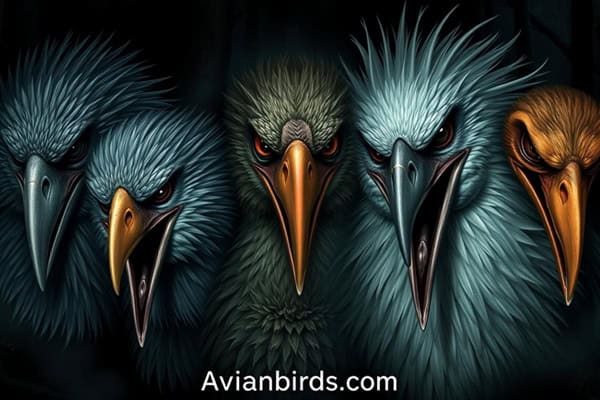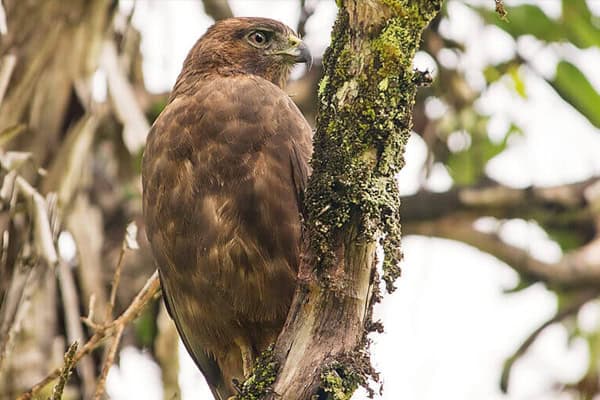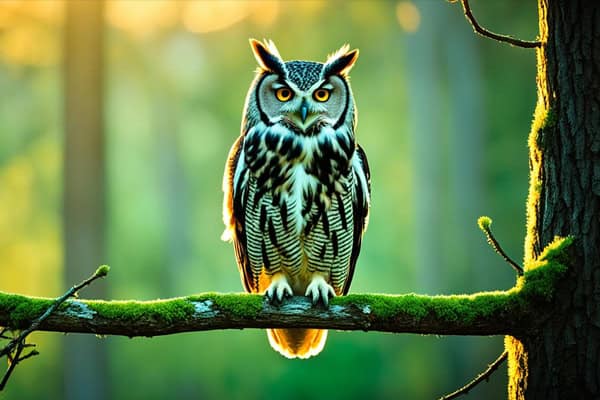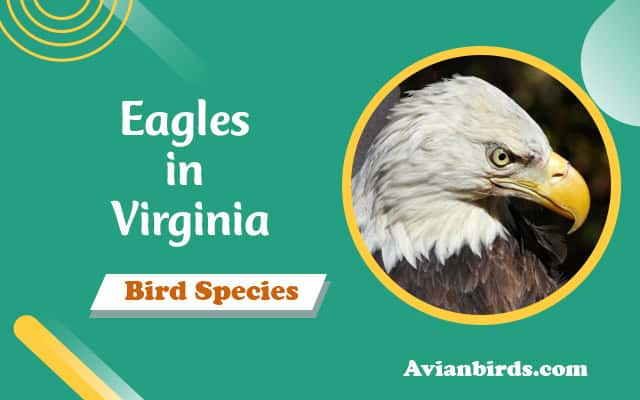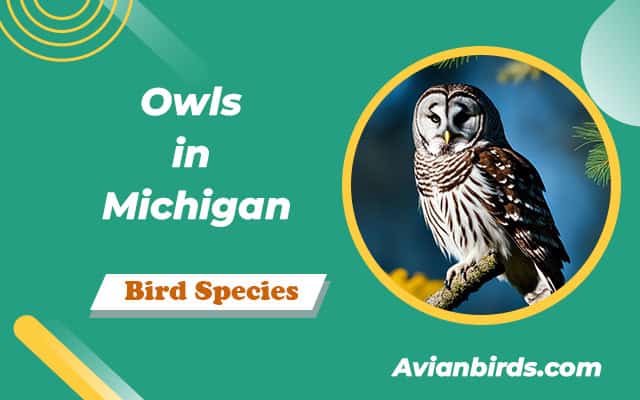Top 10 Scary Bird Species That Will Shock You ( With Pictures)
When we think of scary bird species, our minds may not immediately jump to the skies, but rather to the ocean depths or dark forest shadows. Yet, some of the most spine-chilling creatures actually take flight above us. Birds, often celebrated for their grace and beauty, hide within their ranks species that defy this gentle image with their haunting appearances and unnerving behaviors. From formidable beaks to eerie calls that send chills through the twilight, these avian oddities are as fascinating as they are fearsome. Get ready to explore a world where elegance meets terror—here are the top 10 scary bird species that will shock you!
Explanation of why some birds can be considered scary?
Birds can evoke fear for various reasons. Their physical appearance often plays a significant role. Sharp beaks, large talons, and piercing eyes can send chills down one’s spine.
Behavior is another factor. Some birds exhibit aggressive tendencies when defending their territory or young. The unexpected swoop of a protective parent can startle even the bravest observer.
Then there are myths and cultural perceptions that add to their scare factor. Stories of ominous omens associated with certain species linger in our collective psyche.
Lastly, some birds have eerie calls or sounds that mimic human cries or other unsettling noises, making encounters unforgettable and frightening. Their sheer size also contributes; the larger the bird, the more intimidating it tends to appear.
Top 10 list of Scary Bird Species Around The World
Let’s explore each bird in detail.
1. Great Grey Owl
The Great Grey Owl is an imposing figure in the bird world. With eyes that seem to pierce through the darkness, this nocturnal hunter stands out for its striking appearance. Its large size and distinctive facial disc give it an almost otherworldly presence.
Known as one of the largest owl species, these birds can reach up to 33 inches tall. Their feathers mix grey and brown, allowing them to blend seamlessly into their forested surroundings.
What makes them particularly eerie is their silent flight. They glide gracefully through the air without making a sound, which makes them deadly predators on small mammals like voles and mice.
Their haunting calls echo through quiet woods at night, sending shivers down spines. The combination of size, stealthiness, and piercing gaze makes the Great Grey Owl truly captivating—and undeniably scary bird species for those who encounter it in the wild.
2. Cassowary
The cassowary is often dubbed the world’s most dangerous bird. With its towering height of up to six feet and weight exceeding 130 pounds, this flightless giant commands attention.
Its striking blue skin contrasts with a vibrant red wattle that hangs from its throat. The casque atop its head adds an air of mystery, resembling a helmet more than a bird’s feature.
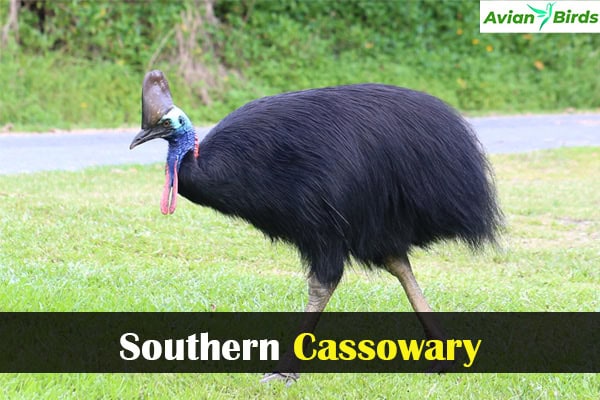
What truly makes the cassowary terrifying, however, are its powerful legs equipped with sharp claws. Capable of delivering lethal kicks, it’s no wonder locals respect their space in the wild.
Though they prefer dense forests and jungles, encounters can happen unexpectedly. Their booming calls resonate through the trees—a warning sign to steer clear.
Despite their fearsome reputation, these birds also play a crucial role in their ecosystem by dispersing seeds throughout their habitat.
3. Secretary Bird
The Secretary Bird is a true spectacle in the avian world. With its long legs and elegant stature, it may not seem intimidating at first glance. However, this bird packs a punch.
Native to Africa, the Secretary Bird is known for its unique hunting style. It stalks through grasslands and savannas in search of snakes. When it finds one, it uses powerful kicks to subdue its prey—often killing venomous snakes with precision strikes.

Its striking appearance adds to its eerie charm. Tall and graceful, the Secretary Bird has an impressive wingspan that can reach nearly six feet. The crest of feathers on its head resembles quill pens sticking out from behind an old-fashioned secretary’s desk.
With their fierce demeanor and formidable hunting skills, these birds are both fascinating and fearsome. Encountering one evokes awe mixed with trepidation—a true testament to nature’s wonders.
4. Lammergeier (Bearded Vulture)
The Lammergeier, or Bearded Vulture, is an astonishing bird found primarily in mountainous regions. Its striking appearance features a wingspan of up to 9 feet and distinctive reddish-brown feathers that give it an almost mythical presence.
What sets this bird apart is its diet. Unlike most vultures that feast on carrion, the Lammergeier specializes in bone-eating. It has a peculiar method: soaring high above the ground before dropping bones onto rocks to crack them open for the nutritious marrow inside.
Its piercing gaze and formidable beak can evoke fear among smaller animals. Moreover, their habit of collecting human-made objects adds a layer of intrigue to their character.
These birds are solitary by nature, often preferring remote cliffs where they can nest undisturbed. The combination of size, diet, and behavior makes the Lammergeier one of nature’s most fascinating yet intimidating avian species.
5. Shoebill Stork
The Shoebill Stork is a sight to behold. With its towering stature and massive bill, it looks like something straight out of a prehistoric era. This bird can stand up to five feet tall, commanding attention wherever it goes.
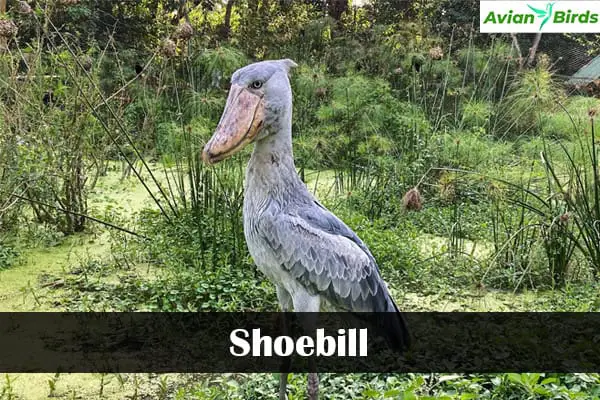
Its bill resembles a giant shoe, hence the name. A powerful tool for hunting, this stork captures fish with precision in its swampy habitat. Watching one in action is both mesmerizing and unnerving.
The Shoebill’s piercing gaze adds to its eerie allure. Its bright blue-gray feathers blend seamlessly into the marshes where they dwell. They often remain motionless for long periods while waiting for prey—a chilling reminder of nature’s raw power.
With their deep croaks and unique behavioral traits, these birds evoke an air of mystery that captivates many wildlife enthusiasts around the world. Just don’t get too close; their size and strength are awe-inspiring—and potentially intimidating!
6. Harpy Eagle
The Harpy Eagle is truly a sight to behold. With its striking black and white plumage, it commands attention from the moment you lay eyes on it. This bird boasts powerful talons that can rival those of a grizzly bear.
Native to the tropical rainforests of Central and South America, the Harpy Eagle is an apex predator. It preys primarily on sloths and monkeys, showcasing incredible hunting skills as it swoops down with precision.

What makes this bird particularly fearsome is its size. With a wingspan reaching up to seven feet, it can appear almost mythical when soaring through the canopy. Its fierce demeanor and piercing gaze only add to its intimidating presence.
Harpy Eagles are also known for their unique vocalizations—an eerie series of calls echoing through dense forests that send shivers down your spine. Encountering one in the wild feels like stepping into another world entirely.
7. Southern Cassowary
The Southern Cassowary is a striking bird that commands attention. With its vibrant blue skin and imposing size, it can reach up to six feet tall. But it’s not just the looks that make this bird stand out.
Armed with dagger-like claws on each foot, the cassowary is capable of delivering a powerful kick. This defensive weaponry has earned it a reputation for being dangerous when threatened.

Despite their intimidating presence, these birds are surprisingly elusive in the tropical rainforests they call home. Their striking features and unique behaviors captivate both birdwatchers and nature enthusiasts alike.
Southern Cassowaries play an essential role in their ecosystem as seed dispersers. They consume whole fruits, helping maintain their environment’s health while adding to their mysterious allure.
8. Marabou Stork
The Marabou Stork is often described as nature’s clean-up crew. Towering at nearly five feet tall, it’s hard to ignore this bird when it’s around.
Its long legs and massive wingspan give it an imposing presence. But what truly sets the Marabou apart is its unsettling appearance. With a bald head and neck, this stork seems almost otherworldly.
This scavenger thrives in urban areas and near landfills. It feeds on carrion, which adds to its eerie reputation. Watching one of these birds feast can be quite a spectacle—both fascinating and disturbing.
Despite their gruesome diet, they play an essential role in the ecosystem by helping control disease spread from decaying animals. The Marabou Stork may invoke fear with its looks and feeding habits, yet it’s simply doing what nature intended: cleaning up after others.
9. Northern Gannet
The Northern Gannet is a striking bird, both in appearance and behavior. With its sleek white body and sharp wingspan stretching over six feet, it commands attention when it takes to the skies.
What makes this seabird particularly intimidating is its hunting technique. The gannet dives from impressive heights, plunging into the ocean at speeds up to 60 miles per hour. This aerial assault isn’t just dramatic; it’s deadly for fish unlucky enough to be in its path.
Their piercing blue eyes add an eerie intensity, enhancing their predatory image. These birds often nest in large colonies on rocky cliffs, creating a cacophony of screeches that can unsettle even seasoned birdwatchers.
Despite their beauty and grace during flight, something is unsettling about watching them hunt with such precision and aggression. Their sheer size and fierce hunting skills place them firmly on our list of scary bird species.
10. Bald Eagle (surprising addition)
The Bald Eagle is often seen as a symbol of freedom and strength. However, there’s an eerie side to this majestic bird that can be quite unsettling.
With its piercing yellow eyes and massive wingspan, it commands attention. But it’s not just the looks—Bald Eagles are fierce hunters. Their sharp talons can grip prey with incredible force.
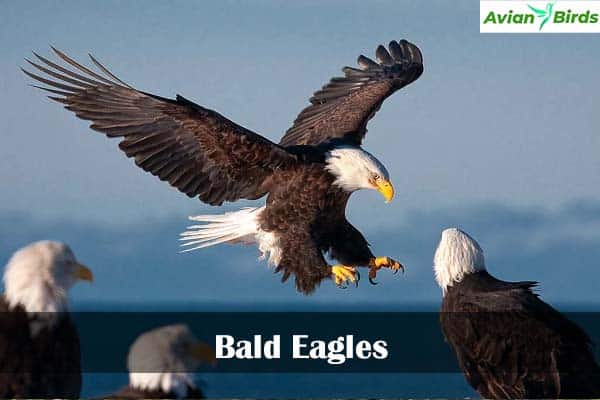
What might surprise you is their scavenging behavior. While they’re skilled at catching fish, they won’t hesitate to steal from other birds or scavenge carrion when the opportunity arises. This opportunistic nature adds a layer of unpredictability to their character.
Their haunting call has been likened to a series of high-pitched notes, which many find surprisingly less intimidating than expected for such a powerful predator. The contrast between their noble image and predatory instincts is what makes them truly intriguing—and somewhat scary—in the avian world.
Related Articles:-
Fun facts about each bird and their unique characteristics that make them scary
With its haunting yellow eyes, the Great Grey Owl boasts a wingspan that can reach over five feet. Its ability to hunt silently makes it an apex predator in the forest.
Cassowaries are known as the world’s most dangerous birds. Their powerful legs can deliver fatal kicks, and they have dagger-like claws—an impressive defense mechanism.
Secretary Birds stand tall at nearly four feet and possess extraordinary hunting skills. They tackle snakes with incredible speed and agility, making them formidable foes for reptiles.
The Lammergeier is unique; it’s known for dropping bones from heights to crack them open. This feeding strategy reveals its cleverness and strength.
Shoebill Storks exhibit a prehistoric appearance with their massive bills and piercing gaze. They ambush fish with eerie stillness, creating an unsettling scene in their marshy habitats.
Harpy Eagles are among the largest eagles worldwide, capable of snatching monkeys right off tree branches using their immense talons. Their intense stare is intimidating enough to send shivers down your spine.
Southern Cassowaries share similar traits but are often more aggressive than their northern cousins—a true embodiment of nature’s raw power!
Marabou Storks have a bizarre look: bald heads paired with large bodies make them appear somewhat menacing while scavenging for food in urban areas or around carcasses.
Northern Gannets dive from great heights into the ocean at astonishing speeds when hunting fish—they’re aerial assassins of the sea!
Bald Eagles command respect not just because of their national symbol status but also due to fierce territorial behaviors during breeding season—don’t underestimate this iconic bird!
Discussion on why these creatures are called scary bird species
Birds are often seen as symbols of freedom and grace, yet some species evoke fear or unease. The terrifying traits of these birds can stem from their size, predatory nature, or unusual appearance. With fierce hunting skills or intimidating features, they hold a unique allure.
Many scary bird species dominate the skies with their powerful presence. Their behavior and characteristics can elicit fascination and fear among those who encounter them in the wild. Whether it’s an owl’s striking gaze or a cassowary’s enormous stature, these birds challenge our perceptions.
Additionally, cultural references have amplified the spookiness surrounding certain bird species. Movies and folklore often portray them as harbingers of doom or messengers from another realm. This connection between mythos and reality only deepens our intrigue with such creatures.
Understanding why we find these scary bird species is essential for appreciating their role in ecosystems. They serve vital functions that keep nature balanced while captivating us with their unique qualities. Scary doesn’t always mean dangerous; it may simply reflect how unfamiliarity breeds fear.
As we explore this list of remarkable avians further, let’s acknowledge that each one contributes to biodiversity in its own way—inviting respect rather than dread among all things feathered.
Frequently Asked Questions About Scary Bird Species
Q1: What is the name of the scary birds?
Cassowaries, vultures, and harpy eagles are often considered “scary” due to their appearance and behaviors.
Q2: What is the most violent bird species?
The cassowary is known as one of the most violent bird species. With its powerful legs and sharp claws, it can inflict serious injury.
Q3: Which bird is in danger?
Many bird species, including the California condor, kakapo, and spoon-billed sandpiper, are endangered due to habitat loss and hunting.
Q4: What is the most intimidating bird in the world?
The harpy eagle is highly intimidating due to its large size, powerful talons, and fierce appearance.
Q5: What is the scariest bird alive today?
The shoebill stork is often considered one of the scariest birds. It is known for its dinosaur-like appearance and powerful beak.
Q6: What is the satanic bird?
The “satanic nightjar” (Eurostopodus diabolicus) is a rare bird from Indonesia, known for its eerie call and nocturnal habits.

